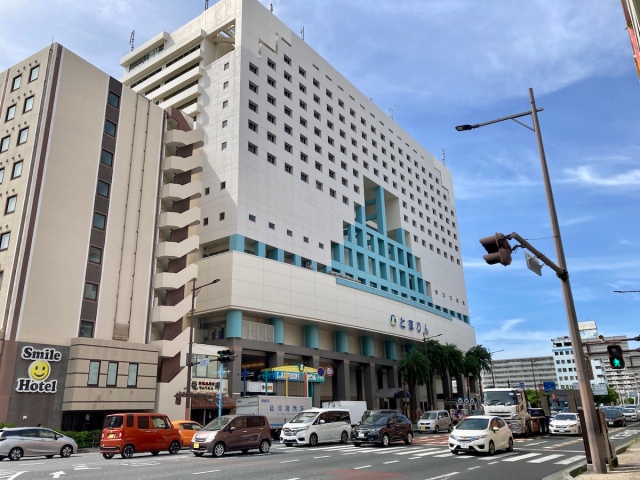
A new adventure takes us to a local spot we never would’ve found ourselves.
When you’re travelling in an unfamiliar area and your belly starts growling for food, where do you go to satiate the beast?
Our reporters have taken to asking local taxi drivers for assistance, hopping in their vehicles and requesting they be taken to the best eateries in town. It’s worked a treat every time, so when hunger pangs hit our reporter Masanuki Sunakoma while he was in Naha, the capital of the Okinawan island chain down south, he immediately held up his hand on the side of the street and hailed a taxi.
The cool air-conditioning inside the vehicle was a welcome relief for Masanuki, who’d been roasting in the sun outside, and when he asked the cab driver to take him to the best Okinawan restaurant in town, the driver’s response was a welcome relief as well, because he said he knew exactly where to go.
Realising Masanuki was an out-of-towner, the cheerful driver began pointing out sites of interest as they made their way to the mystery destination. “There’s an Okinawa soba joint over there, Okinawa zenzai over there, and over there is my alma mater.” The driver obviously had experience helping out-of-towners before, and just as Masanuki began to feel like he was on a taxi tour, with his own private tour guide, they arrived at their destination.
▼ The driver’s recommended spot was an eatery called “Mikasa“.
Mikasa Kume, as it’s known, is a 5-6 minute walk from Asahibashi Station on the Yui Rail monorail. It’s open 24 hours a day, and the driver gave it a glowing recommendation, saying, “All Okinawan people like it!” Though it looked like a relic from the Showa era (1926-1989), Masanuki knows better than to judge a restaurant by its appearance in Japan, so he stepped inside, and was met by a no-frills, casual eatery-style interior.
The day’s menu, set out on the wall, featured a wide variety of Japanese dishes, like tonkatsu (fried pork), katsudon (fried pork bowl), sukiyaki, and curry rice. There were also local Okinawan options like Goya Chanpuru and Fu Chanpuru — stir-fried dishes containing pork and vegetables, “fu” (“wheat gluten”) in the latter — and Pork Tamagoyaki (pork omelette).
The taxi driver recommended the Chanpon (650 yen [US$4.76]), so that’s what Masanuki ordered, despite it being a local specialty of Nagasaki inspired by Chinese cuisine. Using the ticket machine by the counter to pay for his meal, he handed his ticket over to staff and as he made his way to a table, he noticed there didn’t seem to be any tourists here — only locals, who looked to be so relaxed it was as if this was their second home.
▼ It didn’t take long for Masanuki’s meal to arrive, but when it did, it didn’t look like what he’d been expecting.
Masanuki knows chanpon to be a noodle dish, but there were clearly no noodles here. Still, the waitstaff had cheerfully said, “Your Chanpon, sorry to have kept you waiting!” when they gave it to him, so no mistake had been made here.
Okinawa is known for marching to its own beat in the food world, putting a unique spin on everything from tacos to onigiri, so Masanuki figured this must be another new take on a familiar dish.
After tasting his first spoonful, Masanuki discovered his hunch was right — this was an Okinawan take on chanpon, as the saucy, eggy vegetable topping usually served on noodles was served on a bed of rice!
The serving size was huge, presenting great value for money, and the flavour was fantastic — it was richly seasoned with salt and sweetness for mouthfuls of satisfying flavour. This type of homestyle, local cooking is known as “B-kyuu Gourmet” (“B-Class Gourmet“) in Japan, and it’s usually only enjoyed by locals in the know, and highly sought after by travellers wanting to experience the heart and soul of the place they’re visiting.
If Masanuki was a local, he’d be happy to pop by for a bowl of this every day. It was so good that before he knew it, he’d finished every last morsel in his bowl, which is a massive compliment to the chef.
For 650 yen, this was a tasty and filling meal designed to appeal to all sorts of palates, and it definitely got a big thumbs-up from Masanuki, who loved the local recommendation.
It just goes to show that when you’re in unfamiliar territory, it never hurts to flag down a taxi and ask the driver to take you to their favourite eatery. It’ll be the beginning of a journey you’ll never forget, especially in Japan, where the drivers are so kind they’ll even stop the meter to ensure they don’t let you down!
Restaurant information
Mikasa Kume Store / 三笠 久米店
Address: Okinawa-ken, Naha-shi, Kume 1-15-3
沖縄県那覇市久米1-15-3
Open 24 hours
Photos ©SoraNews24
● Want to hear about SoraNews24’s latest articles as soon as they’re published? Follow us on Facebook and Twitter!
[ Read in Japanese ]

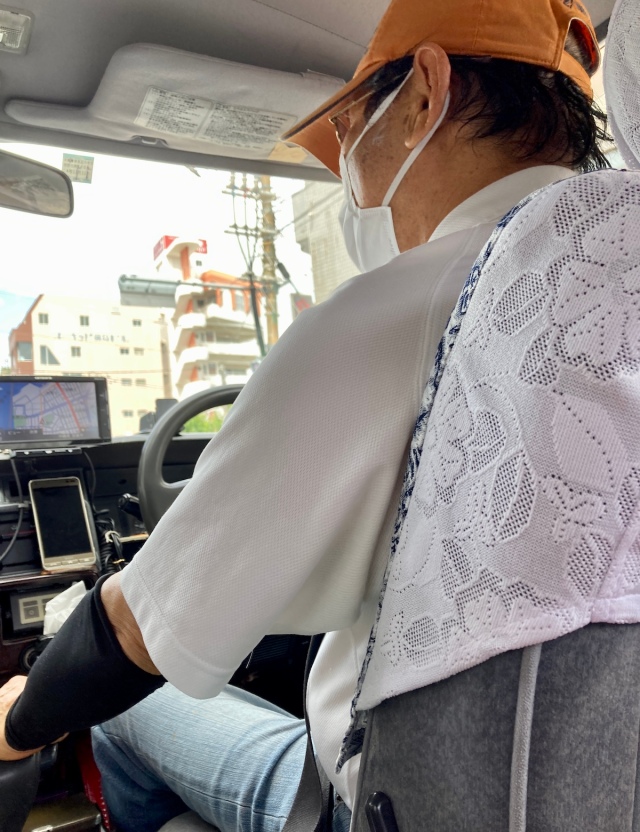
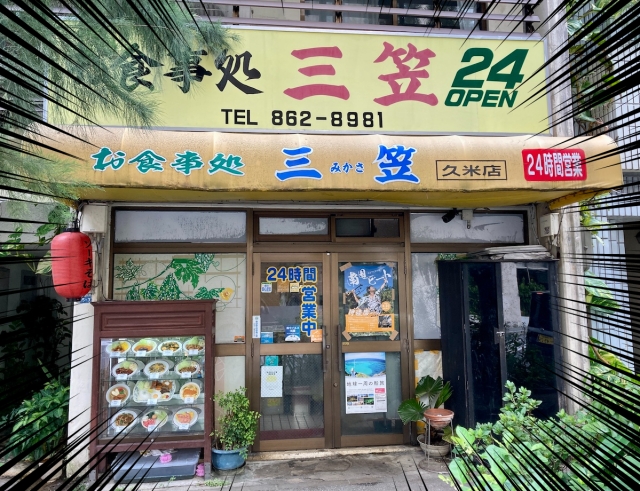
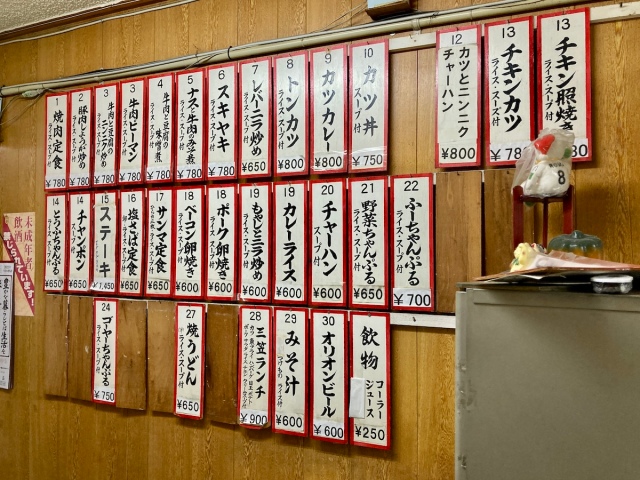
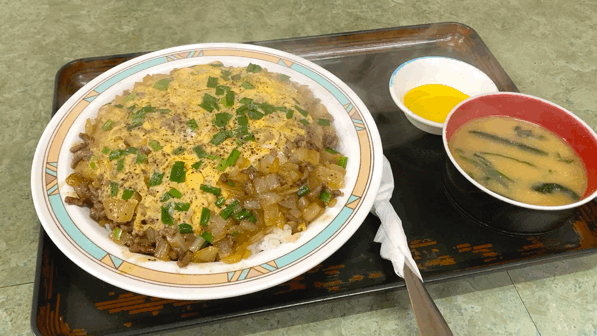
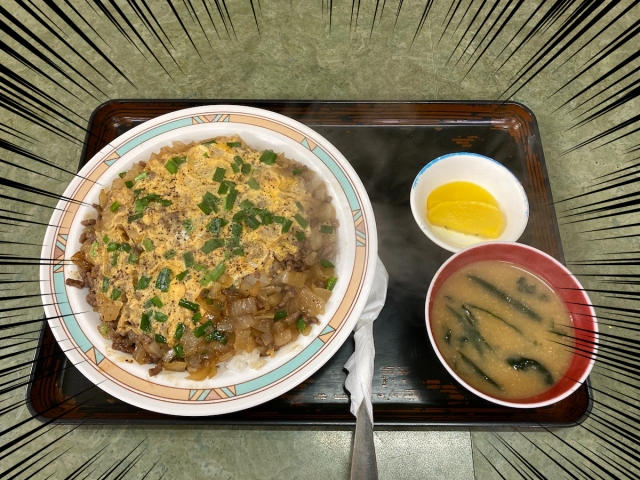
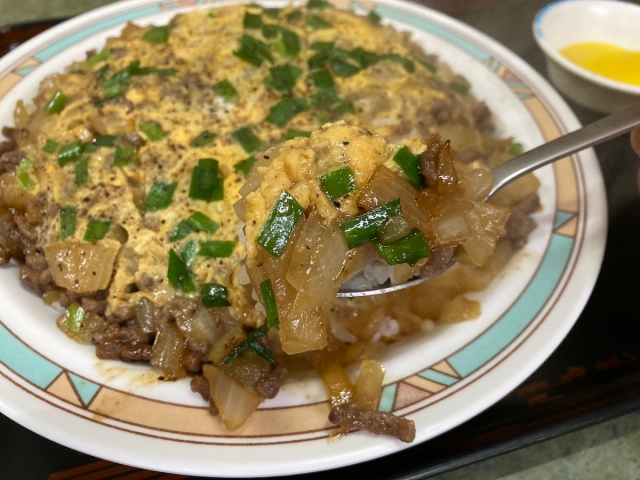
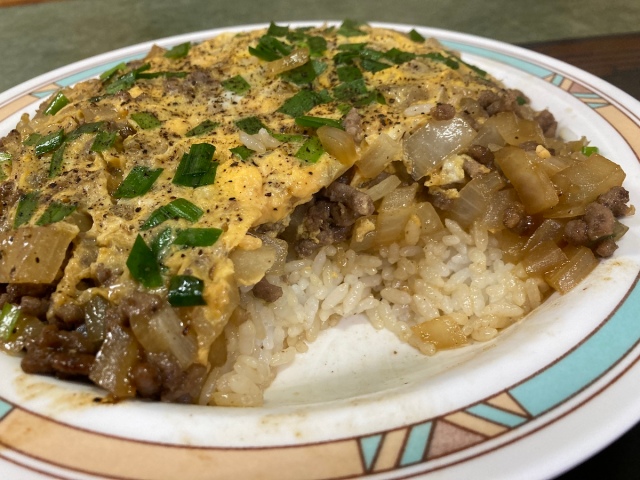
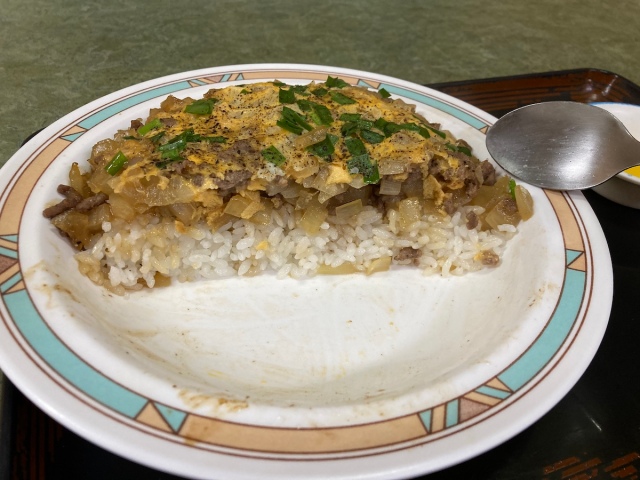
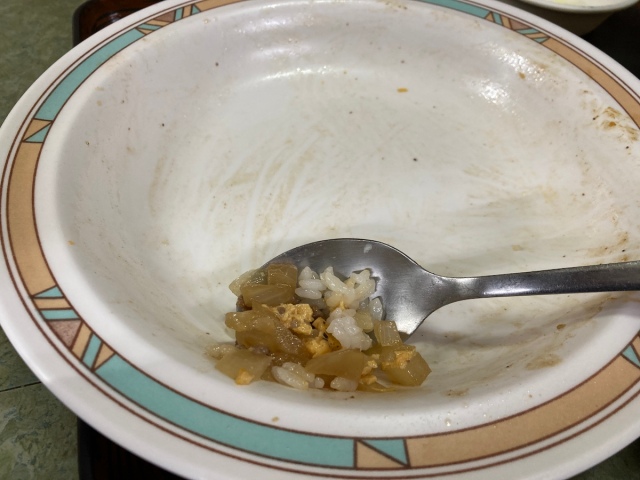
 Truck drivers love this Saitama Ramen Shop, but will it win our hearts?【Taste test】
Truck drivers love this Saitama Ramen Shop, but will it win our hearts?【Taste test】 This casual restaurant in Yokohama will serve you a tasty “two-color” tray at the crack of dawn
This casual restaurant in Yokohama will serve you a tasty “two-color” tray at the crack of dawn “Hey, Japanese taxi driver, take us to the best Yaeyama soba noodles on Ishigaki Island!”
“Hey, Japanese taxi driver, take us to the best Yaeyama soba noodles on Ishigaki Island!” We try hone-jiru (bone soup), a delicious Okinawan specialty hard to find on mainland Japan
We try hone-jiru (bone soup), a delicious Okinawan specialty hard to find on mainland Japan Osaka hotel has amazing all-you-can-eat takoyaki and kushikatsu breakfast buffet
Osaka hotel has amazing all-you-can-eat takoyaki and kushikatsu breakfast buffet Japan’s new difficult-to-drink-from beer glass protects your liver, but it’s a brutal experience
Japan’s new difficult-to-drink-from beer glass protects your liver, but it’s a brutal experience How to order snacks on a Shinkansen bullet train in Japan
How to order snacks on a Shinkansen bullet train in Japan New samurai glasses are Japan’s latest weird must-have souvenir
New samurai glasses are Japan’s latest weird must-have souvenir New Pokémon ice cream, dessert drinks, and cool merch coming to Baskin-Robbins Japan【Pics】
New Pokémon ice cream, dessert drinks, and cool merch coming to Baskin-Robbins Japan【Pics】 Doraemon found buried at sea as scene from 1993 anime becomes real life【Photos】
Doraemon found buried at sea as scene from 1993 anime becomes real life【Photos】 Burger King Japan suddenly adds Dr. Pepper and Dr. Pepper floats to its menu nationwide
Burger King Japan suddenly adds Dr. Pepper and Dr. Pepper floats to its menu nationwide Starbucks Japan welcomes alpacas for cute summer drinkware line【Photos】
Starbucks Japan welcomes alpacas for cute summer drinkware line【Photos】 High-fashion Totoro cuddle purse is like an elegant stroll in the forest【Photos】
High-fashion Totoro cuddle purse is like an elegant stroll in the forest【Photos】 Studio Ghibli hair accessories keep your style tidy with help from Kiki, Moro, Calcifer, and more
Studio Ghibli hair accessories keep your style tidy with help from Kiki, Moro, Calcifer, and more What if Sailor Moon characters were lingerie models? They’d look stunning like this 【Photos】
What if Sailor Moon characters were lingerie models? They’d look stunning like this 【Photos】 Nintendo history you can feel – Super NES, N64, and GameCube controllers become capsule toys
Nintendo history you can feel – Super NES, N64, and GameCube controllers become capsule toys Hello, cosmetics! Clinique teams up with Hello Kitty this summer for first-time collaboration
Hello, cosmetics! Clinique teams up with Hello Kitty this summer for first-time collaboration Demon Slayer: Kimetsu no Yaiba gets new roller coaster attractions and food at Universal Studios Japan
Demon Slayer: Kimetsu no Yaiba gets new roller coaster attractions and food at Universal Studios Japan “The most Delicious Cup Noodle in history” – Japan’s French Cup Noodle wins our heart【Taste test】
“The most Delicious Cup Noodle in history” – Japan’s French Cup Noodle wins our heart【Taste test】 Starbucks releases a cute Frappuccino and Unicorn Cake…but not in Japan
Starbucks releases a cute Frappuccino and Unicorn Cake…but not in Japan Kyoto Tower mascot termination reveals dark side behind cute Japanese characters
Kyoto Tower mascot termination reveals dark side behind cute Japanese characters McDonald’s Japan’s Soft Twist Tower: A phantom ice cream only sold at select branches
McDonald’s Japan’s Soft Twist Tower: A phantom ice cream only sold at select branches Yabai Ramen: What makes this Japanese ramen so dangerous?
Yabai Ramen: What makes this Japanese ramen so dangerous? Finally! Nintendo Japan expands Switch 8-bit controller sales to everybody, Online member or not
Finally! Nintendo Japan expands Switch 8-bit controller sales to everybody, Online member or not Japanese government wants to build luxury resorts in all national parks for foreign tourists
Japanese government wants to build luxury resorts in all national parks for foreign tourists To combat declining birth rate, Japan to begin offering “Breeding Visas” to foreigners
To combat declining birth rate, Japan to begin offering “Breeding Visas” to foreigners 10 things you should buy at 7-Eleven in Japan
10 things you should buy at 7-Eleven in Japan Studio Ghibli releases anime heroine cosplay dresses that are super comfy to wear
Studio Ghibli releases anime heroine cosplay dresses that are super comfy to wear Woman charged for driving suitcase without a license in Osaka
Woman charged for driving suitcase without a license in Osaka Studio Ghibli unveils My Neighbour Totoro miniature house model
Studio Ghibli unveils My Neighbour Totoro miniature house model Kyoto experiencing problems with foreign tourists not paying for bus fares, but not on purpose
Kyoto experiencing problems with foreign tourists not paying for bus fares, but not on purpose Fighting mild hunger with a Japanese soda that turns into jelly in the stomach【Taste test】
Fighting mild hunger with a Japanese soda that turns into jelly in the stomach【Taste test】 Studio Ghibli’s Howl’s Moving Castle tapestry unveiled in Japan for first time
Studio Ghibli’s Howl’s Moving Castle tapestry unveiled in Japan for first time McDonald’s new Happy Meals offer up cute and practical Sanrio lifestyle goods
McDonald’s new Happy Meals offer up cute and practical Sanrio lifestyle goods Sales of Japan’s most convenient train ticket/shopping payment cards suspended indefinitely
Sales of Japan’s most convenient train ticket/shopping payment cards suspended indefinitely Sold-out Studio Ghibli desktop humidifiers are back so Totoro can help you through the dry season
Sold-out Studio Ghibli desktop humidifiers are back so Totoro can help you through the dry season Japanese government to make first change to romanization spelling rules since the 1950s
Japanese government to make first change to romanization spelling rules since the 1950s Foreigner’s request for help in Tokyo makes us sad for the state of society
Foreigner’s request for help in Tokyo makes us sad for the state of society Ghibli founders Toshio Suzuki and Hayao Miyazaki contribute to Japanese whisky Totoro label design
Ghibli founders Toshio Suzuki and Hayao Miyazaki contribute to Japanese whisky Totoro label design Tokyo’s most famous Starbucks is closed
Tokyo’s most famous Starbucks is closed Princesses, fruits, and blacksmiths: Study reveals the 30 most unusual family names in Japan
Princesses, fruits, and blacksmiths: Study reveals the 30 most unusual family names in Japan We go to a festival on a Japanese Air Self-Defense Force base, walk on a runway, see cool planes
We go to a festival on a Japanese Air Self-Defense Force base, walk on a runway, see cool planes Japan has seven lucky taxis in Tokyo, and we just boarded one of them
Japan has seven lucky taxis in Tokyo, and we just boarded one of them We visit super popular tuna specialty joint Izakaya Hitoshi on Okinawa’s Ishigaki Island
We visit super popular tuna specialty joint Izakaya Hitoshi on Okinawa’s Ishigaki Island We throw a bubble party at our cheap countryside house in Japan【Video】
We throw a bubble party at our cheap countryside house in Japan【Video】 Adventures in Morocco: Our Japanese language reporter orders a hamburger, gets a surprise
Adventures in Morocco: Our Japanese language reporter orders a hamburger, gets a surprise The Big Bomb Onigiri Japanese rice ball helps us conquer mountain race but conquers us in the end
The Big Bomb Onigiri Japanese rice ball helps us conquer mountain race but conquers us in the end Okinawan soul fool Pork Tamago Onigiri sold not at a five-star restaurant, but at an airport
Okinawan soul fool Pork Tamago Onigiri sold not at a five-star restaurant, but at an airport We find an Okinawan chili sauce made with the rarest kind of awamori–so we had to taste it
We find an Okinawan chili sauce made with the rarest kind of awamori–so we had to taste it We eat an intimidating curry with toppings randomly chosen for us by CoCo Ichibanya’s ‘Gacha’ app
We eat an intimidating curry with toppings randomly chosen for us by CoCo Ichibanya’s ‘Gacha’ app We make yakisoba hot sandwiches, the next trendy camping meal【SoraKitchen】
We make yakisoba hot sandwiches, the next trendy camping meal【SoraKitchen】 We test drive a Nissan GT-R Premium Edition T-spec in Japan
We test drive a Nissan GT-R Premium Edition T-spec in Japan Japanese sweets box from Amazon Japan is a treasure trove of dagashi nostalgia
Japanese sweets box from Amazon Japan is a treasure trove of dagashi nostalgia Hey, Thai tuk-tuk driver! Take us to the best Thai restaurant in this part of Bangkok!
Hey, Thai tuk-tuk driver! Take us to the best Thai restaurant in this part of Bangkok! Does this Dormy Inn near Mt. Fuji offer the best business hotel breakfast in all of Japan?
Does this Dormy Inn near Mt. Fuji offer the best business hotel breakfast in all of Japan? Celebrating Bruce Lee’s 75th birthday with a Hong Kong pilgrimage
Celebrating Bruce Lee’s 75th birthday with a Hong Kong pilgrimage Hey, Croatian taxi driver! Take us to the restaurant with the best štrukli in Zagreb
Hey, Croatian taxi driver! Take us to the restaurant with the best štrukli in Zagreb
Leave a Reply